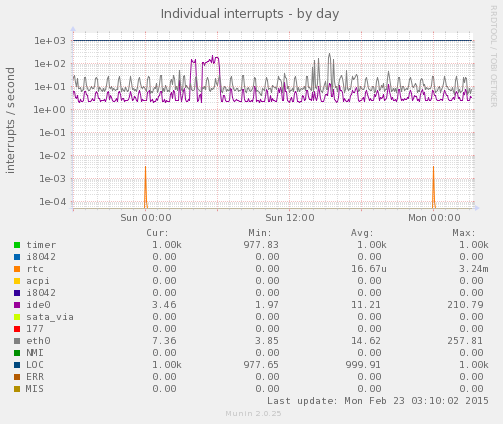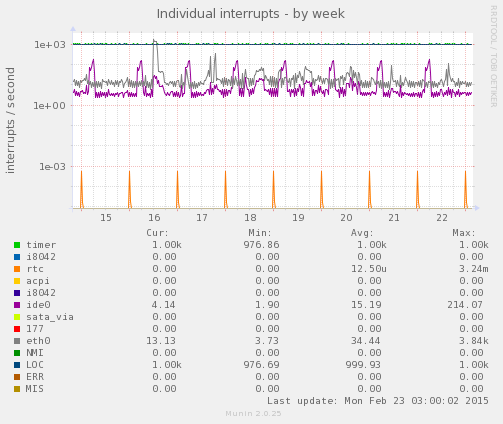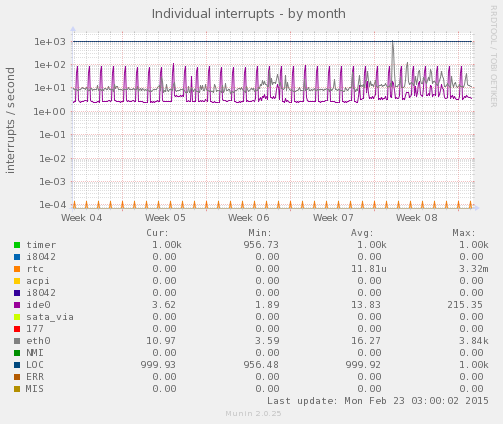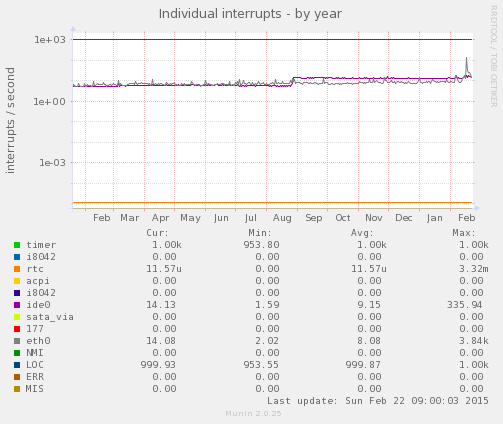Service graphs
Graph Information
Shows the number of different IRQs received by the kernel. High disk or network traffic can cause a high number of interrupts (with good hardware and drivers this will be less so). Sudden high interrupt activity with no associated higher system activity is not normal.
| Field |
Internal name |
Type |
Warn |
Crit |
Info |
| timer |
i0 |
derive |
|
|
Interrupt 0, for device(s): timer |
| i8042 |
i1 |
derive |
|
|
Interrupt 1, for device(s): i8042 |
| rtc |
i8 |
derive |
|
|
Interrupt 8, for device(s): rtc |
| acpi |
i9 |
derive |
|
|
Interrupt 9, for device(s): acpi |
| i8042 |
i12 |
derive |
|
|
Interrupt 12, for device(s): i8042 |
| ide0 |
i14 |
derive |
|
|
Interrupt 14, for device(s): ide0 |
| sata_via |
i169 |
derive |
|
|
Interrupt 169, for device(s): sata_via |
| 177 |
i177 |
derive |
|
|
Interrupt 177, for device(s): ehci_hcd:usb1, uhci_hcd:usb2, uhci_hcd:usb3, uhci_hcd:usb4, uhci_hcd:usb5 |
| eth0 |
i185 |
derive |
|
|
Interrupt 185, for device(s): eth0 |
| NMI |
iNMI |
derive |
|
|
Nonmaskable interrupt. Either 0 or quite high. If it's normaly 0 then just one NMI will often mark some hardware failure. |
| LOC |
iLOC |
derive |
|
|
Local (pr. CPU core) APIC timer interrupt. Until 2.6.21 normaly 250 or 1000 pr second. On modern 'tickless' kernels it more or less reflects how busy the machine is. |
| ERR |
iERR |
derive |
|
|
|
| MIS |
iMIS |
derive |
|
|
|



